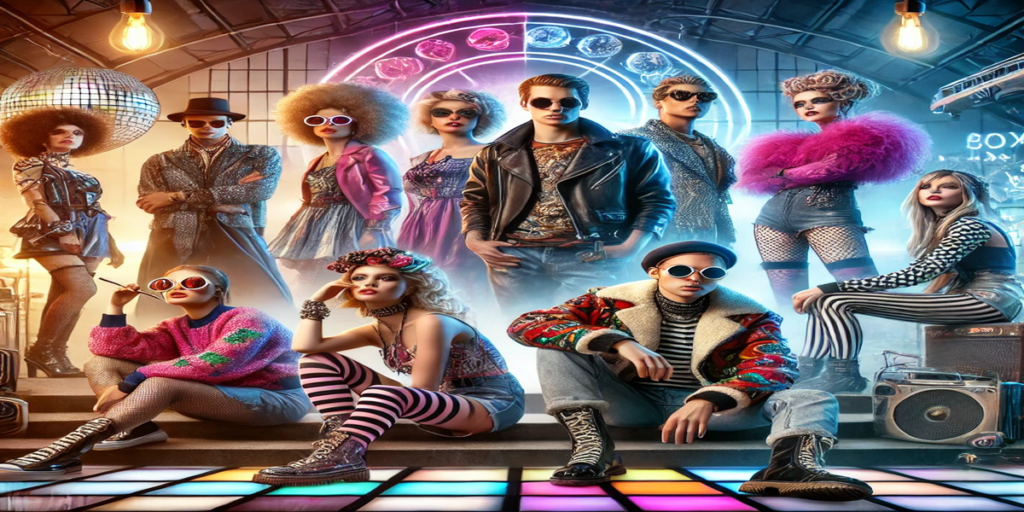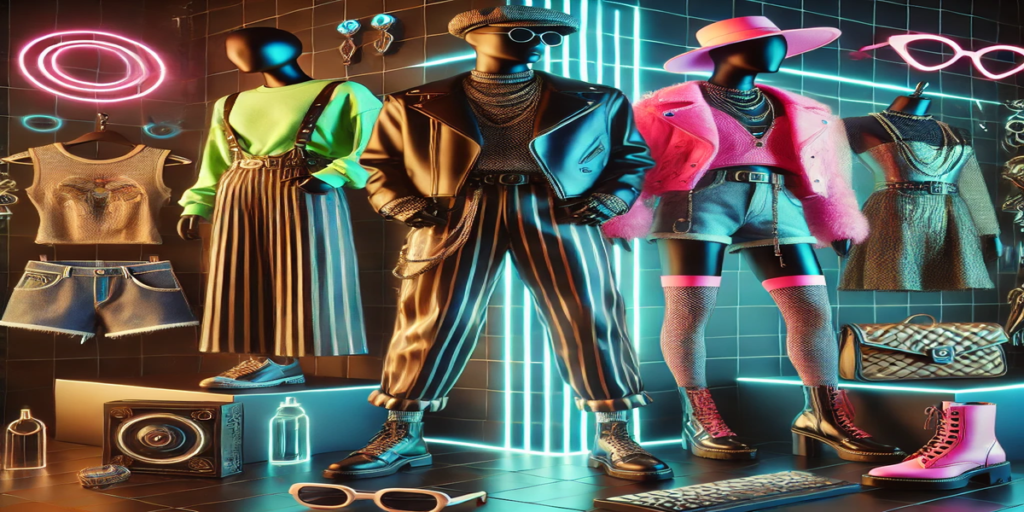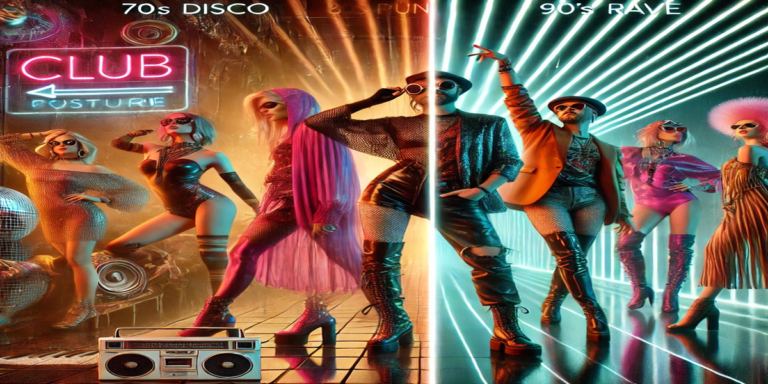Fashion and club culture have always shared an unbreakable bond, a space where self-expression and rebellion come alive through clothing and style. As nightclubs became incubators for creative freedom, their styles influenced fashion designers around the world. Today, the impact of club culture can be seen in some of the boldest trends on runways and in streetwear.
This post dives into the dynamic relationship between club culture and fashion, exploring how it has evolved, which iconic designers it has influenced, and what the future holds.
The History and Influence of Club Culture on Fashion

The Roots of Club Culture
The origins of club culture can be traced back to underground movements where people gathered to celebrate music, identity, and self-expression. Starting with the disco era in the 1970s, clubs began as spaces for diversity and creative freedom. Disco style was characterized by sequins, glamor, and unapologetically bright colors that made their way into mainstream fashion.
Punk and New Wave
The 1980s saw a shift toward punk and new wave influences. Designers like Vivienne Westwood took cues from these edgy styles, bringing distressed clothing, leather jackets, and studded accessories into high fashion. The punk movement was more than a style—it was an attitude, a defiance that resonated through Westwood’s collections and influenced designers worldwide.
The Rave Scene of the 90s
As the 1990s brought rave culture into the limelight, fashion embraced neon colors, baggy silhouettes, and DIY aesthetics. Rave wear’s unrestrained and often gender-fluid fashion became synonymous with freedom, inspiring collections that featured oversized T-shirts, vibrant accessories, and sportswear. This influence persists today, with rave-inspired fashion making a comeback through brands that promote athleisure and casual wear.
Elements of Club Culture in Modern Fashion Design
Bold, Unconventional Choices
Today’s fashion often borrows from the edgy, experimental looks that defined club culture. Designers incorporate elements like bold colors, sequins, and asymmetrical cuts to create statement pieces that break the mold. The oversized, unisex fashion popularized by club kids in the 90s now resonates with the streetwear styles of brands like Supreme and Balenciaga.
Subcultural Aesthetics
From goth to rave, club culture includes several subcultures, each with unique aesthetics:
- Goth: Black leather, layered clothing, and dramatic makeup have inspired high-fashion brands to adopt goth elements, making these once-niche styles more mainstream.
- Rave: Neon, holographic materials, and baggy silhouettes from rave fashion have found their way into collections, with rave-inspired pieces frequently appearing in both casual and high-fashion lines.
Fashion as Performance Art
In club culture, fashion is often a form of self-expression and performance. Designers like Alexander McQueen and John Galliano embraced this ethos, creating collections that doubled as theatrical performances. The idea that clothing can be a form of art, a reflection of the inner self, is a central theme in collections inspired by club culture.
How Today’s Fashion Designers Incorporate Club Culture

Current Trends Shaped by Club Culture
Many modern designers borrow from club aesthetics to add an element of drama to their work. The rise of athleisure, neon streetwear, and gender-fluid designs are rooted in the club culture that emphasizes breaking societal norms. Brands like Gucci and Moschino have launched collections inspired by the bold, rebellious spirit of club culture, with pieces that mix luxury with underground fashion.
Case Studies in Club-Inspired Collections
- Balenciaga: Known for its high-fashion streetwear, Balenciaga often includes oversized clothing and distressed denim, echoing the rave and punk scenes.
- Gucci: Embracing the bold, colorful aesthetics of disco and rave culture, Gucci has integrated sequins, metallics, and vibrant prints in recent collections.
- Hood by Air: This brand blends club and streetwear, taking inspiration from underground clubs with unisex clothing that challenges traditional fashion norms.
The Future of Club Culture in Fashion
New and Emerging Designers
Young designers today continue to draw inspiration from club culture’s themes of identity and freedom. Designers like Charles Jeffrey and his brand Loverboy use club culture as a platform for expression, bringing unique, unconventional designs to the forefront of fashion.
Technology and Fashion’s Future
Technology is transforming how club-inspired designs are created and worn. Brands are experimenting with LED-infused clothing, holographic materials, and augmented reality, all of which align with the futuristic and boundary-pushing nature of club culture. These advances show that the essence of club culture will continue to evolve alongside technology.
Global Influence of Club Culture
Club culture, once a niche movement, is now a global phenomenon. Its influence extends beyond Europe and America, inspiring designers in Asia, Latin America, and beyond. As fashion continues to globalize, designers worldwide draw on club culture’s rich history to create collections that resonate with a diverse audience.
Conclusion
The relationship between fashion design and club culture is more than an aesthetic choice; it’s a statement about freedom, individuality, and breaking boundaries. From punk rock and rave scenes to today’s gender-fluid and tech-driven fashion, the impact of club culture on fashion design is undeniable and constantly evolving. As new generations embrace these influences, the world can expect to see club culture’s legacy continue to push the boundaries of what fashion can be.
Encourage your readers to explore their style inspired by club culture or leave a comment sharing their favorite club-inspired trends.
